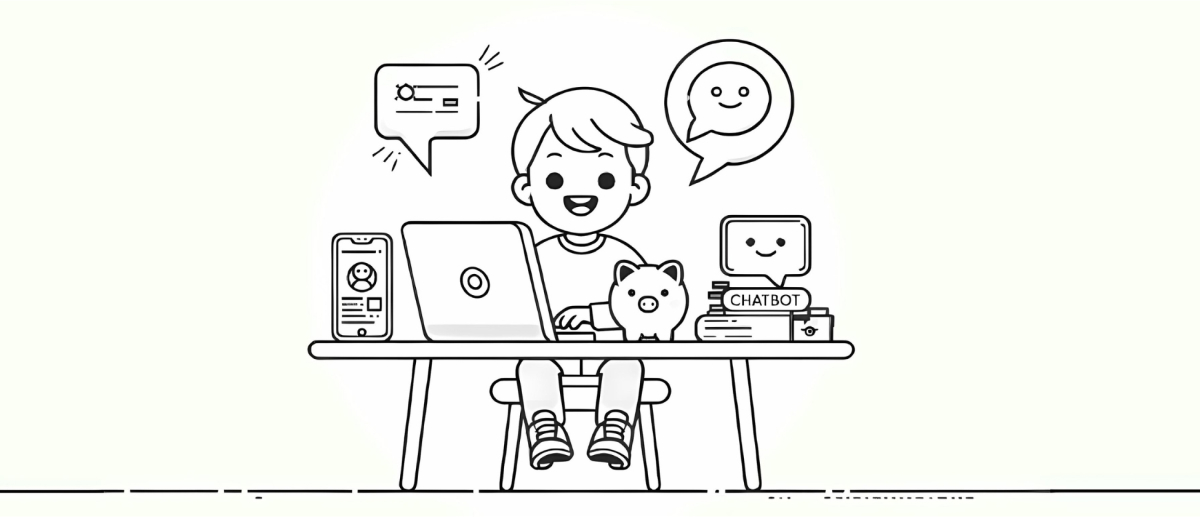13 Chatbot best practices to master your chatbot game


By : Sushree Sangeeta Behera

Last Updated: June 10, 2024

8 min read
Table of Contents
Build Your No-Code Custom AI Agent
Get Started FreeImagine you visit a regular cafe for a coffee. Before you place your order, you are greeted by the barista. In a friendly manner, they ask for your order and even recommend their best offerings, addressing you by your name. This personalization makes you feel valued, and it may become your favourite cafe.
Now, replace the scenario with your online business having a custom ai chatbot that offers a similar interaction to your customers. You can gain valuable customers who may become potential organic promoters of your service.
We need to understand that simply having a chatbot isn’t enough. To truly master the chatbot game, you need to infuse personality into your chatbot and apply best practices to ensure your bot is not just functional, but also engaging and effective. Let’s explore the best practices that can work similarly for your chatbot journey.
13 Chatbot best Practices to Enhance your AI Chatbot
1. Pinpoint key issues
Understanding why you need a chatbot is essential for setting its scope and objectives. Start by identifying the specific problems your business faces, such as slow issue resolution or high customer support costs.
Mapping these issues will guide you in determining the areas to focus on and what you should expect from the chatbot. This clarity will help you choose the best chatbot for your business, ensuring it has the necessary features to address your specific needs.
2. Understand your audience inside out
You know your business well and want your chatbot to represent your brand’s voice accurately. If your brand deals with business professionals, you wouldn’t want your chatbot to interact with them in the same tone used in a fashion shop for teenagers.
It’s essential to understand your customers and ensure the chatbot reflects that understanding. The chatbot must maintain your brand voice, consider demographic factors, and align with the social profile of your audience to deliver appropriate responses.
3. Select the perfect chatbot solution
You know your requirements, and we have identified your issue in the first point. This makes it easier for you to choose a chatbot solution that aligns with the features you need. Check if the platform offers a free trial so you can test it before committing.
Ensure the platform is user-friendly, requires no coding, and provides customization options. Verify its flexibility and seamless integration with other channels and platforms. Lastly, review their pricing and reliability, including feedback from past users to gauge trustworthiness.
4. Data preparation
A chatbot should be trained to answer at least 90% of customer queries related to its domain. This is achievable by feeding it primary and secondary data sources, including domain knowledge, policies, FAQs, feedback forms, Wikipedia articles, training modules, and more.
The data set should be categorized to provide the chatbot with structured information, which helps it better recognize specific topics and intents.
For example, an e-commerce platform’s chatbot must include a prepared data set comprising product information, troubleshooting guides, return policies, order tracking information, and other relevant details.
5. Lead generation
No one knows your customers better than your chatbot, which engages with them 24/7. Chatbot uses conversational methods to gather information from your customers and also actively guide them throughout their buying spree. This engaging approach builds a sustainable relationship between your chatbot and the customers, making it hard for them to leave your website.
In addition, the information gathered by the chatbot is processed by it to identify the most important customers, the details of which are then sent to your sales team. For example, the chatbot can ask the customer about their budget, and when the amount is on the higher end, the customer’s details are sent to your sales team.
6. Intent identification and associated actions
After feeding the database, the chatbot must utilize it efficiently. This means the chatbot should understand the intention behind customer queries and provide appropriate responses to meet their needs. Before releasing a chatbot, it’s crucial to thoroughly test it and ensure it can handle all possible customer intents.
For example, HSBC’s AI-powered chatbot Amy can understand when a customer is asking for account balance information or when they need assistance with transactions.
7. Get user feedback
Traditional surveys can often be boring, making it difficult for customers to complete them. As a result, many customers refrain from providing valuable feedback, which is crucial for improving your site.
This is where chatbots come in as game-changers. Unlike traditional surveys, chatbots make the process more personalized and engaging. Instead of simply asking one question after another, a chatbot can offer suggestions based on the customer’s responses, making the survey experience much more interactive and enjoyable. They seamlessly integrate into conversations, such as after resolving an issue or completing a task, prompting feedback like:
Chatbot- “Was this information helpful? Please rate your experience from 1 to 5.”
8. Human support handoff
The chatbot serves a crucial function by reducing the workload on your customer support team. Managing numerous customer inquiries can be incredibly demanding. However, the chatbot effectively handles initial queries, ensuring that only urgent or critical issues are escalated to the customer support team.
Furthermore, the chatbot assists human agents in dealing with customers by providing essential information, offering suggestions, and outlining future actions as necessary. This makes the chatbot a valuable asset in supporting your customer support team.
9. Integration with applications
Application integration makes a chatbot more efficient, equipping it with various sources and systems. This widens the boundaries of chatbot capabilities and functionalities, enabling it to perform more complex tasks. For instance, if a chatbot can integrate with a CRM, it can use customer data and history to provide personalized interactions.
Additionally, integrating a chatbot with service desks and business applications helps it manage tickets and orders, enhancing user experience. When a chatbot can access various platforms to gather information and manage tasks, it makes customer service seamless and automates various processes.
For example, H&M’s chatbot is integrated with its inventory management system, allowing it to provide customers with real-time information about product availability.
10. Create welcoming greetings
The positive intent behind a conversation is reflected in how it is initiated. A welcoming greeting by your chatbot not only creates a positive first impression but also reflects the brand’s voice and personality. If the chatbot offers a personalized greeting, it makes the user feel valued, calms them and reduces potential frustration. Consider the following example:
1. Personalized:
“Hey [User’s Name]! 🎉 Great to see you again! How can I assist you today?”
2. Professional and Clear:
“Greetings! 📋 I’m ChatBot, at your service. How can I assist you with your queries today?”
11. Infuse personality into your chatbot
A chatbot with a personality significantly enhances a brand’s image. It acts as an AI representative of the brand itself. Humans connect deeply with personalities, making a chatbot with a unique look and engaging tone more memorable than one that simply answers queries.
For instance, Poncho, the weather bot on Facebook Messenger, exemplifies this concept. Poncho features a cat wearing a yellow raincoat and delivers weather updates in a fun and entertaining manner. Its character is so well-crafted that people interact with the bot even when they don’t need weather updates.
However, it’s essential to note that using a human face for a chatbot is not recommended, as it can mislead users into thinking they are conversing with a human. Instead, leverage your creativity and explore various examples for inspiration.
12. Offer human support for complex queries
Your chatbot conversation flow or story can be well-knit, but it’s important to understand that your chatbot can’t solve every query from your users. Be prepared with a fallback message to manage situations where miscommunication happens or when the chatbot has no answer. In such cases, it should gracefully redirect to a human agent. This is not a sign of defeat; rather, it shows that you are doing everything possible to help your users. Check out the given examples:
1. Reassuring and Positive:
“I’m not sure about that, but don’t worry! 🌟 Our human agents are just a click away. Would you like me to transfer you?”
2. Friendly and Casual:
“Hmm, It seems I’ve run out of clever answers. 🤔 Let me call in reinforcements! Would you like to chat with one of our awesome human agents?”
13. Continuously refine using performance data
Check the performance metrics and measure how much they have improved since you first identified the issues in point 1. For example, assess whether the issue resolution time has decreased or if customer satisfaction levels have risen.
When selecting a chatbot solution, ensure that your service provider offers analytics and reporting features to analyze performance. This will give you the advantage of regularly updating your chatbot. Additionally, you can embed feedback requests in your chatbot conversations to collect valuable customer feedback for further improvements.
Summing Up
Your chatbot serves as your virtual brand ambassador, always reflecting the unique identity, principles, and values of your brand. It requires continuous refinement and upgrades based on user feedback. As an evolving entity, it learns from interactions, adapts to user needs, and becomes more efficient over time.
And the most important part: your chatbot is not just a piece of technology—it’s a bridge that connects your brand to your audience in a meaningful and memorable way. So, it is suggested to implement the given best practices to allow your chatbot to become your most trusted companion on the journey of your growth.